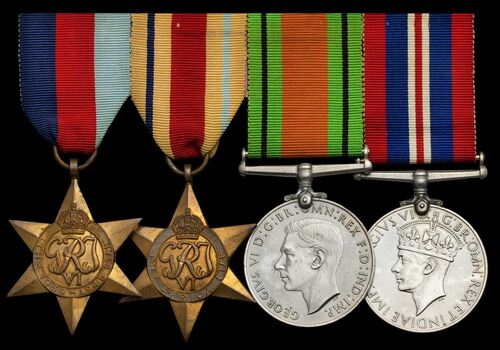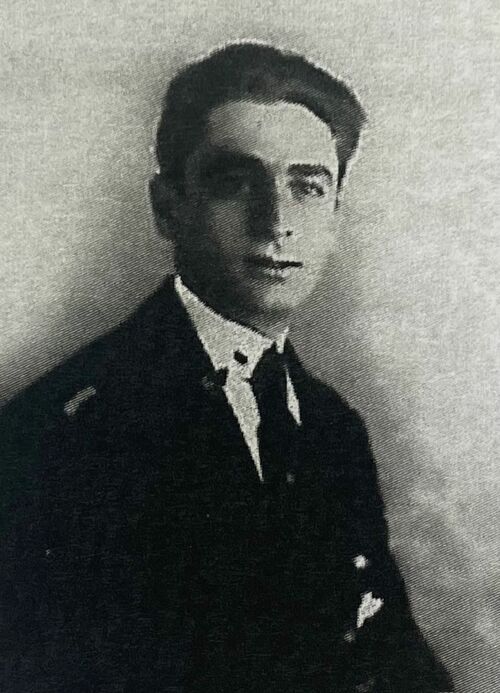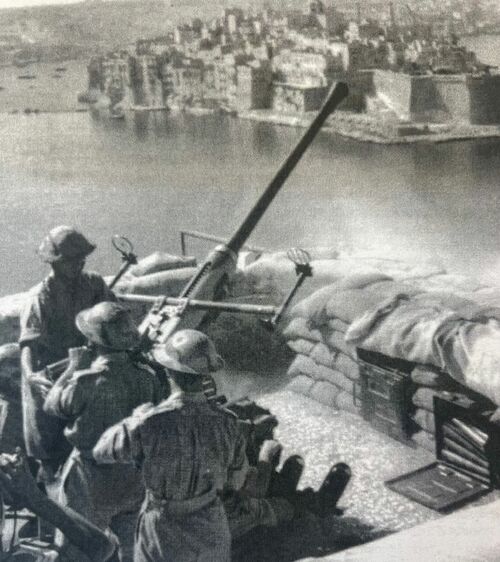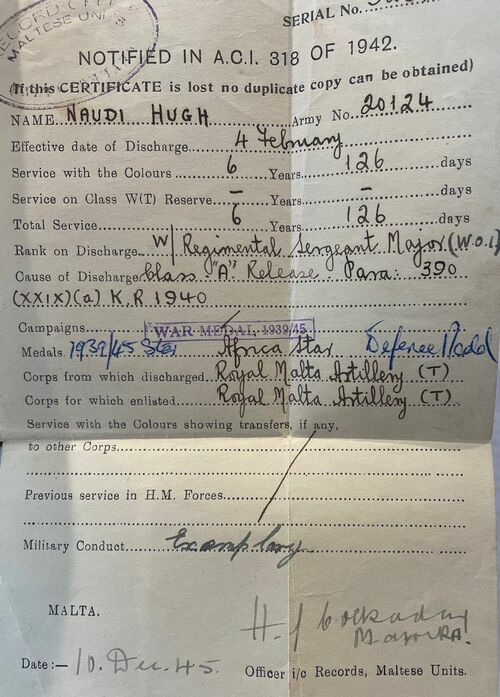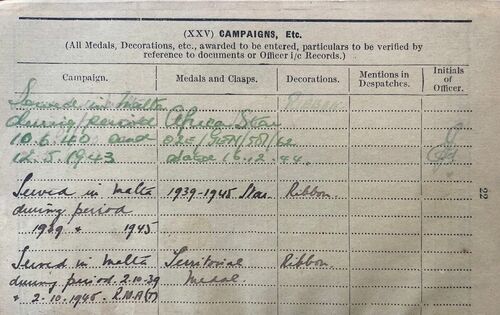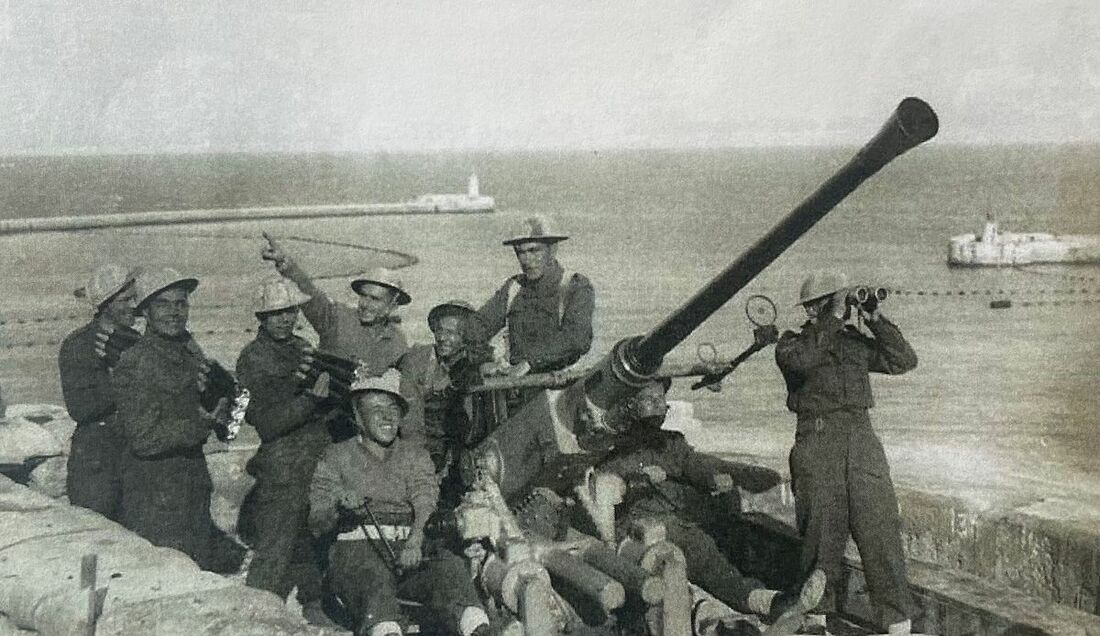Auction: 24112 - Orders, Decorations and Medals - e-Auction
Lot: 611
An evocative Second World War Siege of Malta campaign group of four awarded to Regimental Sergeant-Major (Warrant Officer Class 1) H. W. Naudi, Royal Malta Artillery; while most military personnel sought shelter during the incessant bombing raids that became part of life on “Malta G.C.”, no such luxury was available to the hard-pressed gunners of the Royal Artillery and Royal Malta Artillery, who remained fully exposed to enemy attack
1939-45 Star; Africa Star; Defence and War Medals 1939-45, together with the recipient's Soldier's Service and Pay Book, Army Book 64, issued in June 1944, good very fine (4)
Hugh William Naudi was born on 8 August 1897 at Hamrun, Malta. Having travelled to Europe during 1938, Naudi enlisted in the Royal Malta Artillery on 2 October 1939, his trade being a Garage Manager. The unit was charged with the defence of the island, including two airfields, Ta Qali and Luqa, both of which were subjected to incessant attack from the Luftwaffe and Regia Aeronautica, not least in early 1942, when with overwhelming numbers, limitless replacements and at high cost, the enemy adopted a brutal policy to bludgeon the R.A.F’s bases into submission - the weight of bombs dropped in April alone was around 6,725 tons. Thus the following eye-witness account of a typical raid on Ta Qali, taken from the official account of the R.A.F. in Malta 1940-42:
‘The guns were belting up rounds like nothing on earth; tracers filled the sky, and if things weren’t so serious one could have called it a lovely sight. The din was terrific and Ta Qali seemed ablaze from end to end. The lads would shout that some gun or other had stopped firing, the crew had been knocked out; but no, they’ve started again pushing up rounds harder than ever. The Jerry seemed to be under orders to finish the place and, hell, he tried his best.’
And another account from a Royal Artillery staff officer, praising the work of men like R.S.M. Naudi:
‘The dust after a raid is terrific; but in Malta where the soil is so light and the stones so soft, the cloud of dust that rises is as thick as any smoke screen and makes the work of the gunners trying to see their targets doubly difficult. Sometimes an hour later one could see the dust cloud in a compact mass miles above the sea, driven along with the wind. The weight of these attacks was particularly severe on the gun positions surrounding the airfields. At first, the enemy made the actual airfield itself the main objective. Gun positions suffered from badly aimed bombs and from those released too early or too late, but very soon his main objective became the fringes of the airfield where the aircraft were lying. Combined with this, he made deliberate attacks on the anti-aircraft positions. These suffered severely as they could not be moved out too far lest the airfield runways became bereft of protection.’
And of April 1942 itself - known as the cruellest month - the official account of the R.A.F. in Malta 1940-42 continues:
‘On average there were 170 enemy bombers over every day, Ju. 88s and Ju. 87s coming in waves of 12 to 15 at a few minutes’ interval ... each raid usually lasted about one hour and the total time under raids during the month came to 12 days, 10 hours and 20 minutes ... The Anti-Aircraft Artillery for a time had the battle to themselves. They destroyed 102 enemy aircraft in the month, their best achievement. Thirty of these fell to them during one week ended 8th April. In the course of that week they achieved their record of ammunition expenditure. In one day an average of 69 rounds was fired for every Heavy Anti-Aircraft Gun and 56 rounds for every Bofors gun.’
Small wonder then that one Royal Artillery officer suggested to the B.B.C. that it cut down the scale of its bulletins by simply stating, “During the last month, Malta had six all clears, one of which lasted for twenty-five minutes”; nor, too, that German radio felt compelled to admit, “Malta’s Anti-Aircraft Artillery must be counted among Tommy’s very best, and plays the greatest part in the defence of the Island.”
Naudi was made Regimental Sergeant-Major in May 1941, was discharged on 10 December 1945, no surprise his Military Conduct rated 'Exemplary' and also the rare Territorial Efficiency Medal (Malta) to go with these four Campaign Medals. His wife Victoria, whom he married in 1920 was living with their three children at Gesi House, Msida; sold together with copied extracts from the Malta Archives.
James Naudi is listed amongst the Civilan War Dead of the Second World War, he was a native of Sliema, Malta and was perhaps a relative.
Subject to 20% VAT on Buyer’s Premium. For more information please view Terms and Conditions for Buyers.
Sold for
£60
Starting price
£50

